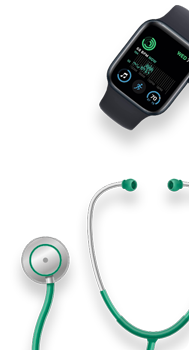
By Leigh Ann Laube
Shared with permission from TimesNews.net
The number of people with celiac disease, or an intolerance of gluten, has risen to nearly one in every 133 people, quadruple the number of people just five decades ago.
Some people choose to avoid gluten, a protein found in grains like wheat, barley and rye, but for others avoiding it is a medical must. Just because you, or someone you know, has to avoid gluten doesn’t mean you have to miss out on backyard cookouts or picnics. It just takes a little planning and a lot of diligence.
Holston Medical Group Pediatric Gastroenterologist Mary Pat Francisco says many parents experience what she calls the “celiac meltdown” after their child gets a diagnosis of celiac disease.
“They want their child to be a unique individual, but there’s natural peer pressure or acceptance … and [it’s difficult] when you’re the kid who can’t eat everything,” she said. “Half [the parents] say they’re handling it fine and plan ahead. The other half don’t try, admit they cheat or feel overwhelmed.”
When people with celiac disease eat foods or use products containing gluten, their small intestine is damaged.
“The gluten protein has triggered an immume response that attacks the small bowel lining where nutrients are absorbed,” Francisco said. “The lining is damaged and doesn’t allow absorption of nutrients.”
Without a healthy lining, a person can become malnourished, no matter how much food they eat.
Celiac disease is a spectrum disease, meaning the disease affects people differently.
“People with those severe issues have to be really careful … contamination is an issue,” said Marie Browning, a holistic nutritionist, certified in nutritional wellness through the American Naturopathic Certification Board. “Most people with severe issues can go back and find someone [in their family] who had the symptoms and was never diagnosed.”
Some patients diagnosed with celiac disease are asymptomatic, Francisco said, and it’s difficult to treat these patients because they don’t feel bad and don’t want to give up gluten.
Symptoms of gluten intolerance can vary widely.
“The most classic symptoms for a toddler is failure to grow or thrive with vomiting, diarrhea or abdominal pain. They look like your typical malnourished, third world child. That’s the extreme. There’s a spectrum,” Francisco said. “The more common patients are going to be picked up through their preschool years or school-age years. They have more generic abdominal pain, vomiting, diarrhea, constipation or poor growth.”
According to the National Institutes of Health, adults are less likely to have digestive symptoms and may instead have unexplained iron-deficiency anemia, fatigue, bone or joint pain, arthritis, bone loss or osteoporosis, depression or anxiety, seizures, missed menstrual periods, canker sores inside the mouth and an itchy skin rash.
Officially diagnosed or not, the treatment is the same — stay away from gluten.
“Diabetes is difficult enough because you have to count your carbs. With the celiac patient, because the gluten protein from the wheat, rye and barley is toxic to the bowel, you’re really not supposed to have any gluten. It’s not just a low gluten diet,” Francisco said.
Browning admits that it can be overwhelming for someone just learning he or she needs to avoid gluten, but that eventually shopping and cooking get easier.
Foods to avoid include anything made with wheat, rye, barley and triticale. Wheat grains and products include anything made with — or called — pasta, durum, kamut, semolina, spelt, farina, bulgur, matzo and couscous. Food ingredients to question include malt, soy sauce, starch, dextrin, maltodextrin, oats, flavorings, spices, seasonings, enzymes and brown rice syrup.
When choosing gluten-free products, Browning said, it’s important to check the label for nutritional information. Some products, however, may claim to be gluten-free when in fact the gluten levels are simply below a certain “allowable” amount.
“There’s still work being done to set what the threshold is to use the term ‘gluten-free,'” Francisco said. “We do have allergy labeling laws that require products to be labeled for the top eight allergens, which includes wheat, but you can have a product that’s wheat-free but not gluten-free.”
Some companies are going above and beyond, Browning said. Bob’s Red Mill is one company that has dedicated gluten-free facilities. Most major restaurant chains have gluten-free menus, but you may have to ask specifically for it. At Posana Cafe in Asheville, Chef Peter Pollay specializes in gluten-free, locally grown foods.
Browning said she will ask her clients to humor her by eliminating the most obvious sources of gluten for three weeks.
“You see improvement in infants and children in three or four days,” she said. Adults will often experience other benefits: “My miscellaneous aching went away. My foggy brain went away,” she said.
Celiac disease is a lifelong condition, Francisco said, and even if you are able to successfully manage it, you are never cured.
“Patients with celiac disease need to be diligent with their diet and also follow-up, at least annually, with a physician to have blood work done. The same blood work that is abnormal in a celiac patient should go to normal when the patient is on a gluten-free diet,” she said. “That doesn’t mean you’re cured, it means you are doing well on the gluten-free diet. You will always have celiac disease.”
For those living with celiac disease, Browning recommends several different sources for information: Gluten-Free Living magazine, www.livingwithout.com, “Living Gluten-Free For Dummies,” by Danna Korn, and “The Gluten-Free Bible” by Jax Peters Lowell.
Gluten-free Tri-Cities, a peer-led support group for people with celiac disease or gluten intolerance, will meet at 5:30 p.m., Aug. 1, at the IPMC Health Resources Center at the Kingsport Town Center. Facilitator is Mary Lou Wilson. For information about the group, call 1-800-888-5551.
Here are some gluten-free recipes:
Healthier Banana Bread
Marie Browning
1 cup mashed ripe bananas
3/4 cup sugar
1 tsp. vanilla
2 eggs
1/4 cup coconut oil
3/4 cup gluten-free flour (King Arthur’s works very well)
1/4 cup ground flaxseed
1/2 cup almond meal
3/4 tsp. gluten-free baking powder
1/2 tsp. baking soda
1/4 tsp. salt
1/2 cup chopped nuts and/or 1/2 cup chocolate chips, optional
Preheat oven to 350 degrees F. Combine bananas, sugar, vanilla and coconut oil in a medium mixer bowl; beat at medium speed for 1 minute. Add eggs and mix well.
Combine flour, flaxseed, almond meal, baking powder, baking soda and salt in a large mixer bowl. Add banana mixture alternately with the coconut oil to the dry ingredients, mixing well but not overbeating. Pour batter into two 8- by 4-inch loaf pans. Bake for 50 to 60 minutes or until done. Cool for 5 minutes before removing from pans.
Marie’s Almond Meal Shortcakes
Marie Browning
2 cups almond meal
1/4 cup cornstarch
2 tsp. baking powder
1/4 tsp. salt
1/4 cup sugar
6 Tbsp. butter, melted
4 eggs
1/3 cup water
Mix butter, eggs and water together. Butter muffin tins, and combine the dry ingredients with the butter, egg and water mixture. Fill muffin cups about 2/3 cup full and bake for 15 to 20 minutes until lightly browned.
Browning suggests splitting the muffins and filling with strawberries, blueberries or raspberries, adding berry sauce and serving with freshly whipped cream.
Hot Fudge Cake
www.glutenfreeclub.com
1 cup gluten-free flour
3/4 cup sugar
6 Tbsp. baking cocoa powder, divided
2 Tbsp. baking powder
1/2 tsp. salt
1/2 cup milk
2 Tbsp. oil
1 tsp. gluten-free vanilla
1 3/4 cups hot water
1 cup packed brown sugar
In medium bowl, combine flour, sugar, 2 tsp. cocoa, baking powder and salt. Stir in milk, oil and vanilla until smooth. Spread in an ungreased 9- by 9-inch square baking pan. Combine brown sugar and remaining cocoa. Sprinkle over batter. Pour hot water over all. Do not stir. Bake at 350 degrees F. for 35 to 40 minutes. Serve slightly warm with ice cream.
Grill safely gluten-free
In order to grill safely gluten-free, make sure only plain meat and vegetables end up on the grill. At cookouts or picnics, take the following precautions:
Ask if the meat is plain. Seasoning or soup mixes containing wheat may have been added to the meat.
Check for marinades or sauces. Marinades or sauces may contain wheat, especially if they contain soy sauce. Some soy sauce can be purchased gluten-free. Watch out for marinades made with beer.
Check for meat substitutes. Meat substitutes, like veggie burgers, often look like the real thing, but can contain wheat.
Wrap your food in foil while grilling. Wrapping your meat or corn on the cob in foil is crucial if you don’t know if the grill has been cleaned, especially after marinades containing gluten have been used or buns have been warmed on the grill.
Make sure the spatula only touches plain meats or vegetables. Cross contamination with buns or marinades could be dangerous.
Source: Nationwide Children’s Hospital




